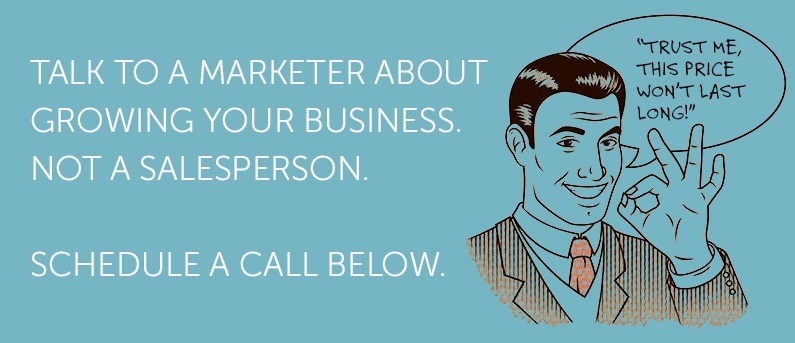
A site’s content is its lifeblood. It captures the interest of visitors, prompts action and, ultimately, makes the sale. When the content is good, it’s often very, very good. But when it’s bad, well …
There are many ways to kill your site, and content missteps are a major one. Copywriting site-killers drive away visitors and discourage them from ever coming back, something no marketer wants. Here are 3 of the most common content mistakes—are you guilty of these crimes against marketing success?
1. It’s all about you.
Marketing copy that’s all about you is marketing copy that isn’t about your customers. And that’s bad. Consumers want you to tell them how you can benefit them, solve their problems and answer their questions—not how great you are or how awesome your product is.
There are red flags that will tell you if your site’s content is turning inward. Do you:
- Rave about your company’s accomplishments?
- Talk about your products and their features instead of the benefits and solutions they provide?
- Focus excessively on topics that interest you personally?
Readers are interested in learning about your product’s features—as long as you tie them in to how these features can benefit them. A good rule of thumb is to include content that is 80% informational and 20% promotional. Benefit-oriented copy works far better than promotional copy when it comes to engaging your prospects and converting visitors into customers.
2. You don’t get to the point.
Visitors to your site need a reason to keep reading. Get to the point quickly with your marketing copy. Whether you are writing for your home page, your blog or any page in between, leading with the point you’re trying to make is always a good idea.
Think about journalists. They lead with the who, what, where, when and why of the story. Take the same approach with your site’s content, and your visitors will know exactly what they can expect when they read further. Keep your main point above the fold, and when necessary, feature the key messaging in prominently displayed titles and subheadings.
3. Your meta tags fall short.
You may not think that your meta data is important to consumers. Isn’t that stuff just for the search engines? Not exactly.
The meta title is found in the browser tab. This little snippet of content tells both people and search engines who you are and what you’re about. It should be given the same attention as your site content.
Good meta titles describe your product/service and include your location and, often, your company's name.
Your meta description is the text that is visible to readers when they see you in search engine results. If it’s not clear, concise and compelling, they may just move on to the next result.
Good meta descriptions should sound natural, not keyword-stuffed. Much like your regular site content, these meta descriptions should be benefits-oriented; after all, this copy needs to convince people to click on your link in the first place.
Copywriting site-killers spell disaster for your marketing efforts. Avoid them by only including high-quality, optimized content on your site and in your meta data. Emphasize the benefits of your products and services and how they can solve your customers’ problems. Use your content to make it clear that you are the right business for them, and your target market will keep coming back for more.

